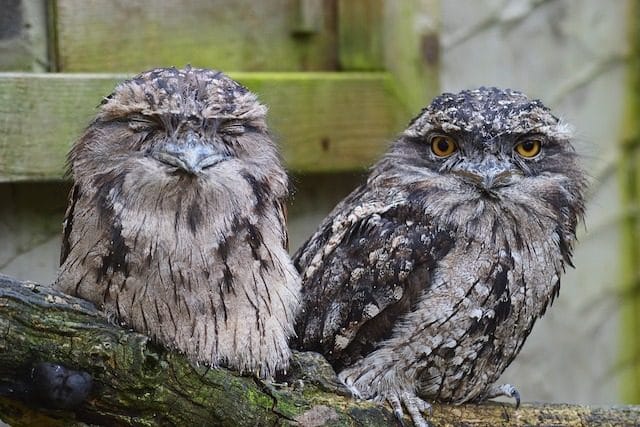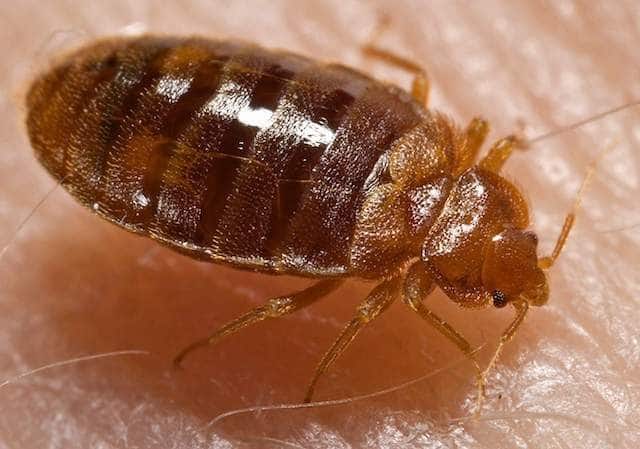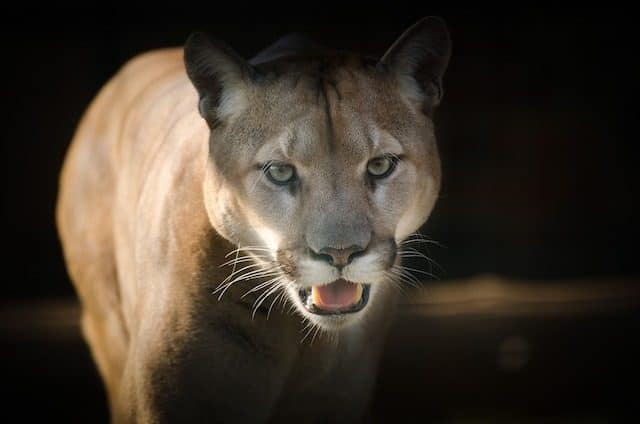Evolution is a continuous and ongoing process that has shaped life on Earth, as far back as life on Earth has existed. And like history, this process hasn’t somehow stopped just because we’re now here to experience it. The problem with the theory of evolution, however, is the fact that we can’t directly see it in action, since it’s not something that happens all of a sudden, but as a slow and gradual process, taking place over many generations.
As a sort of embodiment of the law of cause and effect, evolution works by giving living organisms the edge needed to survive and even thrive in different environmental conditions. So the faster the changes in the surrounding habitat, the faster life needs to adapt in order to keep up with these variations. And today’s world is nothing if not “fast-changing.” So, in order to prove this theory once and for all, here are some direct and observable examples of rapid evolution at play.
10. Weeds Change

In urban environments, where most of the ground is covered in asphalt and concrete, plants have to make due with whatever patches of exposed soil they can find. And in some cities this available soil makes up just 1% of the entire surface area. So, given the short supply of viable real estate, some plants have begun to change their ways in terms of how they spread their seed. This is something that Pierre-Olivier Cheptou, the research director at the Centre d’Ecologie Fonctionnelle et Evolutive (CNRS) in Montpellier, France, has observed with a daisy-like weed growing in the city. These plants make use of two kinds of seeds – one that’s heavier and falls straight to the ground, and another, lighter type that’s usually blown by the wind in different locations.
As compared to the same species growing in rural areas, the urban variant growing in Montpellier has begun favoring the heavier seeds, instead of the wind-blown ones. What’s more, Cheptou concluded that this process only took 12 years to happen. The reason for this change is the higher chance of reproduction if the seeds fall on the same patch of soil, close to the parent plant, rather than if it’s blown by the wind to a parking lot somewhere. But if this trend continues and the urban plant ends up renouncing its lighter seeds altogether, it may be susceptible to another danger. “The downside is that the population fragment is vulnerable if the environment changes there; it will not be able, ever, to reach new and fertile ground if it gives up the potential for long-distance dispersal,” said Martin Cody, a plant biologist from the University of California.
9. Differently-colored Owls

Tawny owls are commonly found in woodlands all across Eurasia and come in two main colors – grey and brown – depending mostly on their environment. Their plumage color doesn’t change throughout their lifetime, and when two differently-colored tawny owls mate, the grey gene is dominant – meaning that their offspring will mostly be of that color. Grey owls also have a slower metabolism and a stronger immune system, giving them an overall advantage over their brown counterparts. But their population is shrinking nonetheless.
Over the past three decades, the number of brown owls living in Finland has increased from 30 to 50 percent. And given the previously mentioned disadvantages brown owls have, this doesn’t seem to make sense. But because winters aren’t as long or as severe as they once were, being brown in Finland no longer sounds like a bad idea – especially when it comes to owls. Plumage color helps these birds hide from both predator and prey alike, by allowing them to blend in with the surrounding environment. And since a snow-covered landscape isn’t as common, being grey puts the owl at a serious disadvantage. Their plumage literally makes them stand out, meaning that they’re now an easy-to-spot target. If this trend continues, then the grey owl’s days are numbered.
8. Tuskless Elephants
https://www.youtube.com/watch?v=56Wq6ZLTT2A
Since we’ve proven ourselves to be quite ineffective when it comes to protecting elephants from poaching, evolution has stepped in to get the job done for us. And the way it went about it was to make the elephants be born with smaller or no tusks whatsoever. Under normal circumstances, tuskless elephants represent about 2 to 4 percent of the total population – with females being predominant in that group. But in a 2008 paper published in the African Journal of Ecology, it was revealed that the number of tuskless females in Zambia’s South Luangwa National Park had risen from 10.5% in 1969, to 38.2% in 1989. In a similar report, the number of tuskless elephants in Uganda was between 9-to-25% of the entire population, depending on the region. This trend was visible in every elephant population that went through a wave of heavy poaching.
As more and more tusk-sporting elephants are being killed, the tuskless will become predominant in the group. If this happens, the elephant will hopefully be spared from future slaughter. But this sacrifice, even if it translates to their survival as a species, has its own series of disadvantages. Elephants use their tusks in a wide variety of ways, like digging for food and water, carrying logs and branches around, or for protecting themselves from predators. Experts say an elephant without tusks is a crippled elephant, given that it can no longer make use of them. They can still survive, given the circumstances, but they’ll have a harder time doing it. It would be like humans being born without fingers, for example.
7. New York’s Bedbugs are Tough SOBs

Bedbugs seem like the sort of problem that we’ve dealt with already. And this is somewhat true, given the fact that bedbugs were almost wiped out from North America roughly 60 years ago, thanks in large part to DDT – an insecticide that’s since been banned for its devastating health and environmental effects. But in more recent years, bedbugs have returned with a vengeance, tormenting thousands of sleepers across the country – with New York being declared as America’s most bedbug-infested city. So, what happened? Well, as it turns out, the phrase “what doesn’t kill you, only makes you stronger” is more than true in this case, since some of these little critters have evolved to be 250 times more resistant to insecticides than their 1950s ancestors.
These mutations happened randomly within the bedbug population, all across the country, with countless of them dying before several got exactly the right kind of genetic variation needed to withstand those insecticides. And once they did, much of the population quickly adopted the mutation, thanks in large part to the fact those who didn’t have it were still being killed off. Today, even the strongest of insecticides barely make a dent in the bedbug populations that have this genetic variation, and have begun to spread through the US once again. The pace at which this insecticide-resistant mutation has spread indicates that relying solely on chemicals is no longer a viable option. Sleep tight!
The same thing can be said about various bacterial infections. Since we’ve begun using antibiotics at an unprecedented rate in recent decades, certain strains of bacteria have become resistant or even immune to our only defense against them.
6. Predators and Superpredators

We tend to think of mountain lions as apex predators, sitting comfortably at the top of the food chain in their native habitat. We see them as powerful creatures, stalking their prey from the shadows and pouncing when we least expect them. But while this was somewhat true, these cougars have since learned the hard way that their position as ‘top dog’ has been taken over by another, even greater predator – humans. Being hunted for hundreds, if not thousands of years, pumas have developed a healthy fear of humans. In a study performed on mountain lions in California, it was revealed that these powerful creatures run away at the mere sound of human voices heard in the distance. They do so even if they’re feasting on a kill.
Researchers placed motion-sensor cameras and audio devices around a recent kill, and waited for these pumas to come back to them. When they did, the devices turned on and the cougars started running away for dear life. Various radio talk show segments were used for these experiments, where the hosts weren’t yelling or being agitated – using instead the most benign discussions the researchers could find. They also used frog noises half the time in the audio recordings, in order to keep the study consistent.
The results showed that the pumas had no reaction while the frog sounds were playing. But when human voices were heard, their response was almost instantaneous – freezing in place and then immediately running away. In several cases, the cougars were so frightened that they completely abandoned their kill –not returning even after several days. We can easily call this a case of behavioral evolution. Now, whether this fear of humans is something that’s already been implanted into their genes or it’s something they’re taught from a young age, we still don’t know. Nevertheless, it’s important to remember that a mountain lion is more afraid of you than you are of it. But you still probably shouldn’t try to ride one, Karl.
5. ‘Plenty’ of Smaller Fish in the Sea

Overfishing is a serious problem the world is facing right now. If things will remain the same, statistics show that by 2048, the world’s oceans will be completely devoid of any commercially-viable fish. When will we learn that we should never have taught a man to fish? Anyway, some measures were put in place in order to safeguard this global food supply. For several decades now, these regulations stated that only fish above a minimum size can be captured, while smaller fish should be allowed to reproduce at least once or twice. And in theory, these laws ensured that the global fisheries won’t disappear, while fishermen could focus only on larger, high-value fish. A win-win situation, as some may say. But in the 1980s, a worrying report came out, describing a phenomenon not anticipated by the people who passed these well-intentioned laws in the first place.
Not only are the global fisheries collapsing, but the fish that still exist are smaller than they once were. First, larger fish produce more eggs and end up having more offspring as a result. When these fish are removed, the overall population will have a harder time of replenishing itself. Second, it was revealed that this decades-long, size-selective fishing has actually caused fish to reach sexual maturity at a younger age than under normal circumstances. This means that some populations of heavily-fished adult fish today are 50 to even 60 percent smaller in size and weight than they were back in the ’70s. And as the bigger ones are being captured while the smaller ones make it through the nets, this trend will continue. This phenomenon is also greatly exacerbated by climate change. Since warmer water holds less oxygen, fish also have to shrink in order to accommodate to their changing environment.
4. Moscow’s Strays
A truly fascinating phenomenon is taking place on, and under, the streets of Moscow. Today, the city is home to roughly 35,000 stray dogs, which is about one for every 300 human inhabitants. That’s a lot, and a situation that stems back to at least the mid-19th century, when various Russian writers began mentioning it in their works. Andrei Poyarkov, a researcher at the A.N. Severtsov Institute of Ecology and Evolution, has been studying these strays for some time now, and has come to some really interesting realizations. These dogs are rapidly evolving to better adapt to their urban environment. Poyarkov observed that, over time, these strays tend to lose their spotted coats, wagging tails, and the overall friendliness that separates them from wolves. They’ve also developed a series of traits optimized to fill four distinct niches that allow them to thrive. Poyarkov labeled them as guard dogs, scavengers, wild dogs, and beggars.
The so-called guard dogs serve as semi-feral assistants to security personnel all over Moscow’s many fenced-in locations. The security guards are seen by these dogs as their masters, who feed them in return for their services. The scavenger ‘class’ is made out of dogs who roam the city’s many garbage sites. The wild dogs are the most feral, and rely predominantly on hunting mice, rats, birds, cats, and other small animals they can find. Lastly, we have the beggars, which are probably the most interesting. Not only have these dogs developed the ability to better recognize people who are the most likely to give them food, but have also mastered the ability to travel by subway and recognize distinct stations that are part of their territory. Additionally, Poyarkov says that, since these beggar dogs rely more on brains than brawns for their survival, the alpha male position in the pack is taken by the smartest, and not necessarily the strongest dog.
3. Religion vs. Evolution
No, we’ll not be getting into that particular debate, so don’t worry. We will, however, be focusing on how religion has influenced a certain species of fish to rapidly evolve or disappear. Every year, a religious ceremony took place in a cave in Mexico where the locals poisoned the water with a natural toxin extracted from various plants. The fish that live in this cave, the Poecilia Mexicana, or more commonly known as the Atlantic molly, were being paralyzed by the toxin and began floating to the surface, where the locals collected them for the community. This is a tradition that’s been passed down through the generations, and where these fish were regarded as gifts from the gods of the underworld.
A group of researchers has analyzed these fish and compared them to others of their species, but from elsewhere in the region. And as it turns out, the cave fish are 50 times more resistant than the other Atlantic mollys. Now, even though most still eventually die from the toxin, they’ve adapted to such a degree that many are able to survive the religious ceremony and pass down their genes to the next generation. The government has banned this particular tradition in recent years, hoping to conserve the species, but evolution may have beaten them to the punch.
2. For When the Family Moves In

The Carolina anole, or more commonly known as the green anole, is a species of lizard native to the southeastern United States, as well as several Caribbean islands, close to Florida. This lizard also has a cousin, the brown anole, common in Cuba and the Bahamas. Back in the 1950s, some of these brown anoles hitched a ride on agricultural shipments from Cuba and made their way to southern Florida, among other places in the US. Nevertheless, it was in Florida where they met their long-lost cousins and had a good, old-fashioned family reunion. But as these reunions sometimes go, these new arrivals overstayed their welcome. In fact, the green anoles had to go as far as move and leave the newcomers in their old home.
A short while after contact, the native species of anole was, more or less, forced to move higher-up in the branches of trees. And what’s particularly interesting here is that the green anole went through a series of changes that made them better suited for their new lifestyle. In just 15 years and roughly 20 generations, their toe pads had become larger, with more sticky scales on their feet. These adaptations are preferred when it comes to the thinner and smother branches found higher up in trees. “To put this shift in perspective, if human height were evolving as fast as these lizards’ toes, the height of an average American man would increase from about 5 foot 9 inches today to about 6 foot 4 inches within 20 generations an increase that would make the average U.S. male the height of an NBA shooting guard,” said Yoel Stuart, a postdoctoral researcher at the University of Texas.
1. Plastic-eating Bacteria

Besides the law of cause and effect, evolution also seems to follow the law of supply and demand. Because, in another example of rapid evolution, certain bacteria have developed the ability to break down and consume PET, the most common plastic found in clothing fabrics, food and drinks containers, landfills, and, of course, the ocean. This plastic’s appeal was that it’s lightweight, colorless, flexible and strong, and it can be used in a wide variety of ways. But it’s also notoriously hard to break down by microbes in a process we know as biodegradation.
Nevertheless, a team of Japanese researchers has recently identified a species of bacteria, the Ideonella sakaiensis, which is able to do just that – break down PET and use it as energy. What’s more, they’ve noticed that this bacterium only uses two enzymes to get the job done. This is a fascinating discovery, given the fact that these plastics have only been around since the 1940s, and have become predominant in the environment only in more recent decades. This discovery truly pays homage to the versatility of life and the evolution that enables it.
We shouldn’t, however, let ourselves be fooled into thinking that these tiny creatures will be able to clean up our mess, because they can’t. The time it takes them to break down this plastic is too long to be put to any practical use at the moment. Scientists have observed that it needs up to six weeks and a steady temperature of 86 degrees Fahrenheit to consume a thumbnail-sized piece of plastic. Still, knowing the process through which plastic is broken down, scientists are thinking of transferring those particular genes to a faster-growing bacterium that can get the job done in a shorter period of time.
